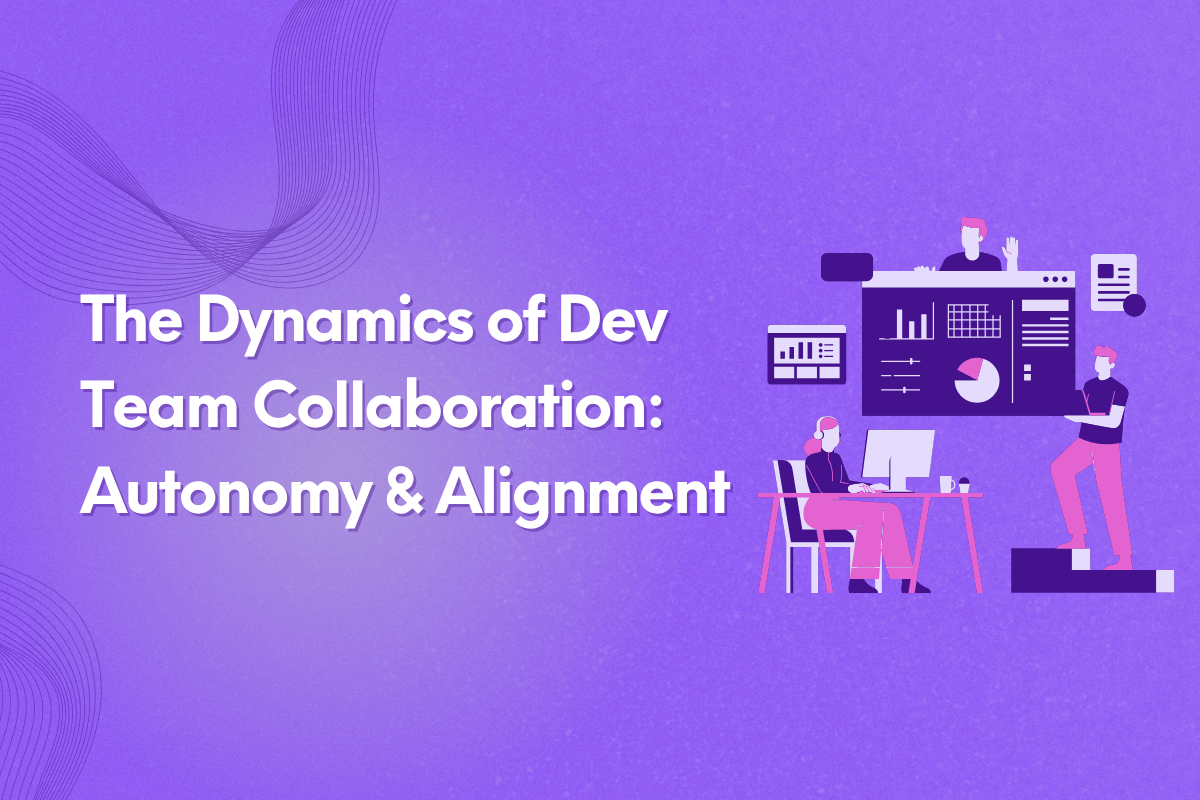Developers and Agile teams consider two values as foundational: autonomy and alignment. They need both freedom and direction to be productive and deliver high-quality work. But often, they face the challenge of having tension between autonomy and alignment.
Autonomy gives dev teams the freedom to make decisions, experiment, and apply their creativity towards problem-solving. Alignment ensures that everyone moves in the same direction, completing shared goals based on timelines.
One without the other leaves teams feeling stifled or disorganized. In this blog, we explore what autonomy and alignment mean for developer teams, the risks of leaning too far toward one side, and how to find the right balance.
The Developer Context: Autonomy and Alignment
Some teams assume that autonomy and alignment do not go hand-in-hand, that freedom is stifled by strict rules and hierarchies within an organization. It's easy to confuse alignment with restrictive procedures, but that is often not the case.
Finding the balance is the key to a high-performing team, and understanding the context between alignment and autonomy is the first step.
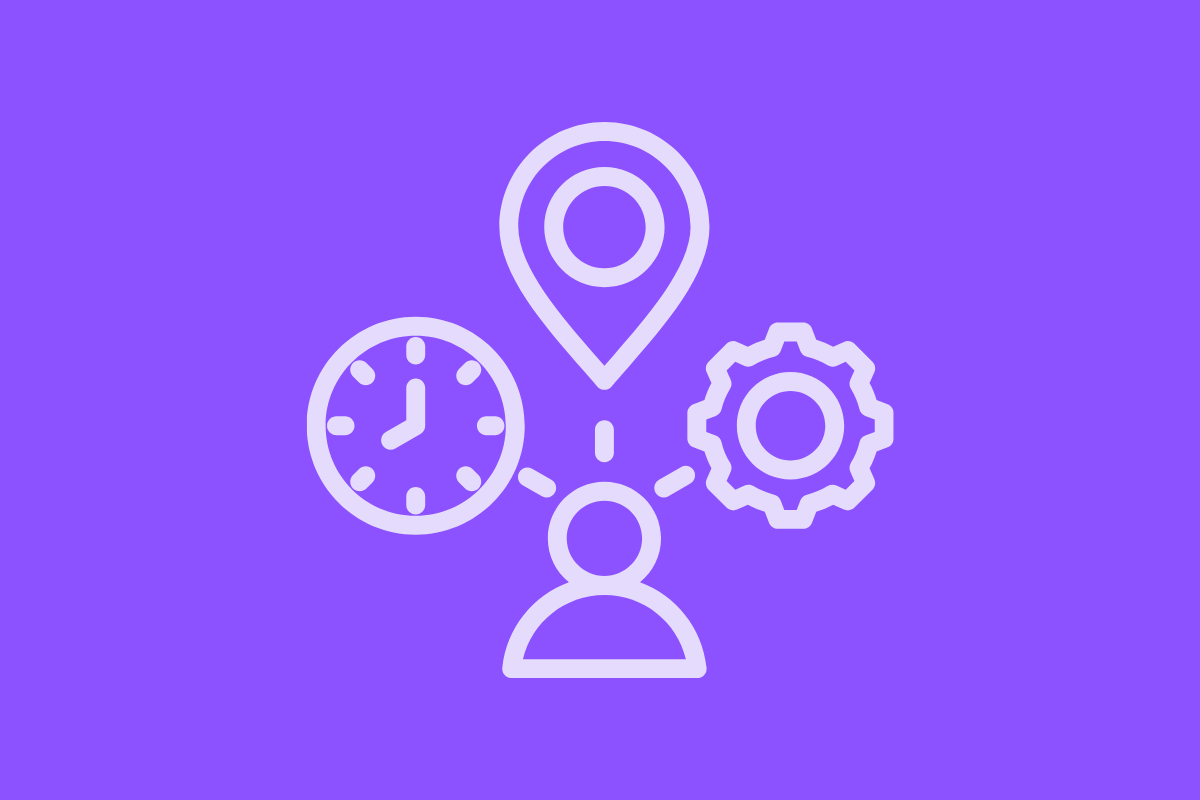
Alignment
In terms of developers and Agile teams, alignment is not just the procedures put in place for them to follow. Alignment creates a shared understanding around standards, priorities, and systems so your team progresses towards one goal.
Without alignment, teams often work disconnected, wherein fragmented communication occurs. This can lead to duplicate work or team members working on irrelevant tasks. For developer teams, alignment means:
- Understanding how each task connects to other processes, to the entire system, other teams, and even stakeholders.
- Follow the technical standards that ensure quality work.
- Better coordination when it comes to task dependencies, shared priorities, and avoiding duplicate work.
- Share a common roadmap, objectives, and business metrics.
Alignment is more about helping teams understand the vision and giving direction to team members so they can work towards shared goals.
Read More: How AI Tools Save Time: Deep Dive into Leiga's SMART Goal Generator
Autonomy
Developers and software engineers thrive on autonomy. They love and value the freedom to make decisions, solve problems in their own way, and apply their creativity when working on their tasks. Here's what it means to have autonomy for developers:
- Have the freedom to solve problems in their own terms, how to structure code, and how to operate.
- Manage your backlog, schedules, and processes without having every decision pass through dev leadership.
- Allowed to experiment, take ownership, or change processes without asking for approval.
For developers and project managers, giving developers autonomy means that you respect their expertise and the skills they bring to the table. In fact, teams that have autonomy move and ship faster. This is because they do not go through the bureaucracy of getting approval at every stage of their work.
But too much is also bad, especially for developers working remotely. It's important to remember that being responsible also means working cohesively with your team.
Risks and Benefits of Extreme Autonomy and Alignment
Teams can be productive, and teams can be excellent at collaboration. But one without the other breaks the foundation of a high-performing team. If you lean too far on one side, there's bound to be problems.
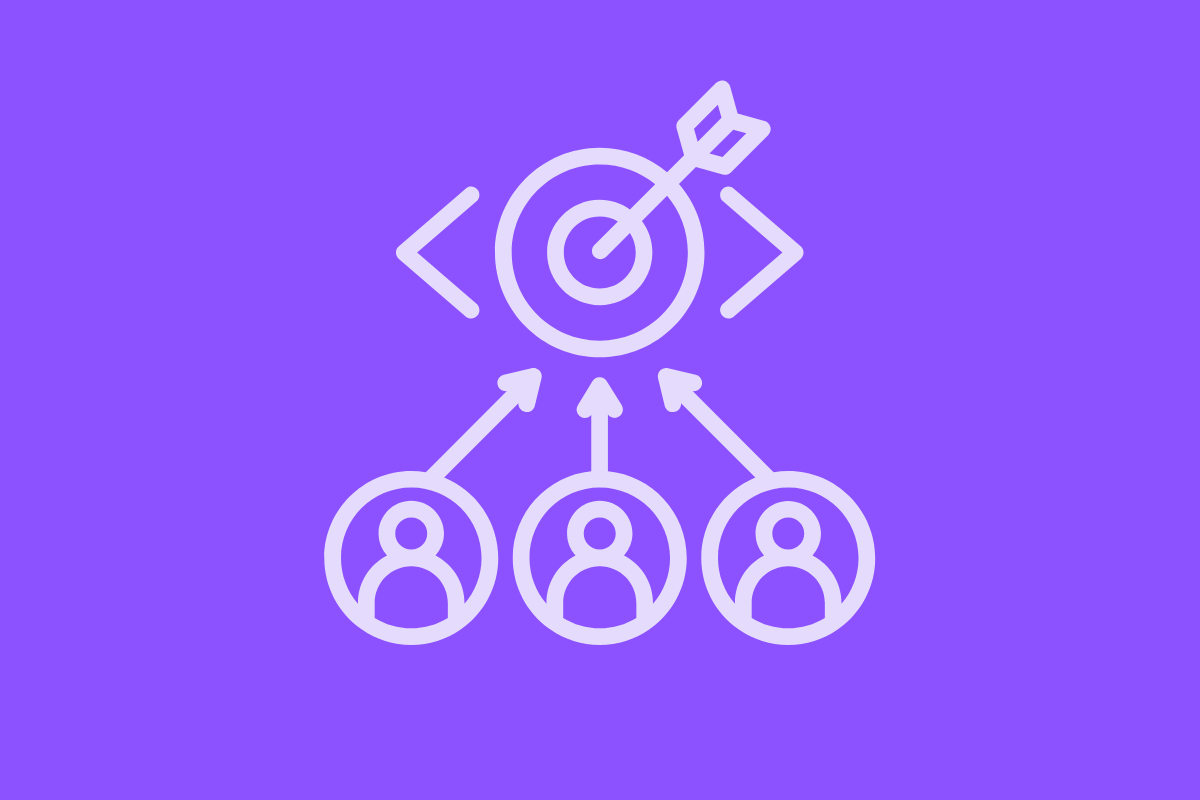
High Autonomy, Low Alignment
Developers may feel more productive when they have high autonomy without a team leader or project manager micromanaging their every move. However, without strong alignment to back their high autonomy, they can face these risks:
- Work that doesn't follow quality standards, duplicate tasks, and conflicts in systems and processes.
- Task dependencies cause bottlenecks in the workflow. Some developers may be burdened with APIs that don't match and cross-team tasks that do not align.
- Inconsistent interface, design, and function.
- Difficulty measuring the progress of projects.
While some teams believe that they work better and ship faster with high autonomy, it might also invite a lot of inefficiencies and chaos, especially when you work with other teams or departments.
Strong Alignment, Low Autonomy
On the other hand, you should also look into having low autonomy and an environment with a strong or restrictive alignment. Rigid processes or excessive control can lead to:
- Bureaucracy that creates backlogs. Teams that wait for approvals and guidance at every stage of their work cannot move without confirmation.
- Developers feel that they are being micromanaged, leading to lower morale, dissatisfaction, and a reduction in their creativity.
- Unable to adapt fast to changes in processes or opportunities due to slower responses.
- Stifles innovation under heavy processes or rigid frameworks.
In essence, teams that have strong alignment but low or without autonomy are more reactive, only able to address issues after they have happened, rather than a proactive team that is capable of fixing and innovating.
Finding the Right Balance: Aligned Autonomy
The best teams do not choose one over the other. They learn to balance autonomy and alignment to perform better and ship faster. The concept that addresses this tension is called aligned autonomy.
This is when teams have the freedom to decide how to do their work while also having a shared vision, purpose, and standard of work. The concept also aligns with having freedom within a framework.
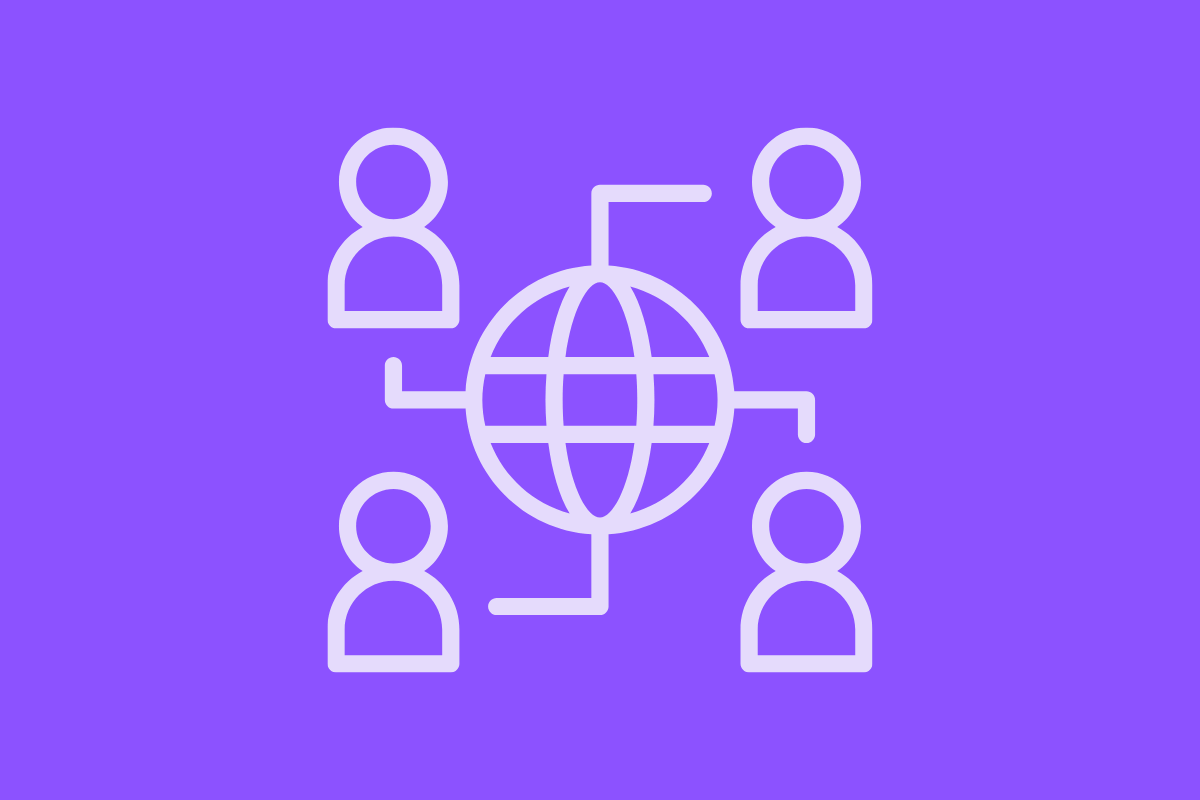
Clear Goals and Constraints
Having OKRs helps give teams and entire organizations direction on how to achieve their goals, translating goals into daily actions. This guide helps developer teams work towards goals while also giving them the choice on how to implement processes.
Guardrails and Standards
It's important to have shared standards when it comes to quality of work and processes, APIs, compliance rules, and even frameworks. With these, teams know where the boundaries are and show respect, especially with collaborative tasks and dependencies.
Transparency and Visibility
With an effective dashboard, progress reporting, and seamless communication, teams ensure transparency and visibility. This is where the best project management platforms come in. With the right tool, teams can improve their workflows and communication. IT helps prevent overlaps and surface issues early before they become real problems.
Better Collaboration
With aligned autonomy, teams can have better collaboration among each member and even with other teams. They can effectively manage dependencies, integrations, and other shared tasks.
Read More: AI-Powered Task Management Software: A Game Changer for Dev Teams
Once you find the right balance and achieve aligned autonomy, your team can become faster and more coherent, working towards the completion of your project. It also fosters a healthy working environment where developers can still remain innovative while feeling trusted and empowered.
It's important to keep the connection between members, other teams, and stakeholders, so everyone moves in the same direction.
Challenges and Tensions for Dev Teams
It's easy to understand the concept of aligned autonomy. It's even easier to idealize the entire idea. But it can be challenging for developer teams to adopt aligned autonomy. Here are some common challenges you may experience.
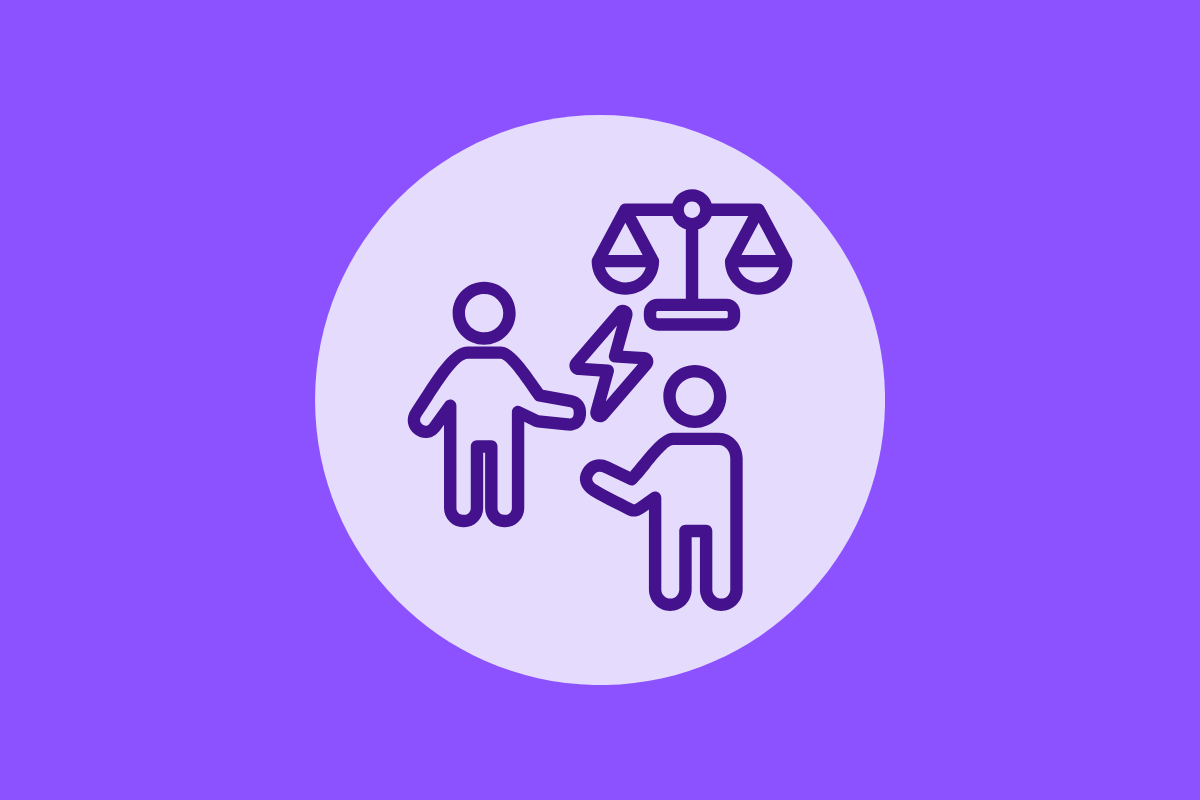
Unclear Strategy or Weak OKRs
The first step towards achieving a shared goal is to set strong OKRs. When you don't have a clear strategy or set weak OKRs, it leaves teams confused and struggling to align. Even with high autonomy, this makes it hard for developer teams to achieve goals.
Tool Overload and Lack of Integration
Developers use multiple tools daily, including task management apps, issue-tracking platforms, and tools for DevOps. With these many tools being used by different teams or members, it's hard to have alignment, and even visibility suffers. The disconnection among tools also leads to blind spots that can cause issues.
Misaligned Metrics and Lack of Visibility
Visibility on task ownership, goals, progress, and metrics helps teams become aligned. However, when teams do not share the same metrics as the entire organization or business, you may be forced to adjust your processes or product at the expense of organizational alignment.
Communication Gaps
Even when teams and members are aligned on objectives, there can still be issues with communication gaps. Having too many messaging apps or fragmented communication, scattering information across different tools, can lead to misunderstandings. Often, teams also experience lost context.
Complex Task Dependencies
When systems and organizations scale, cross-team collaboration and task dependencies become more complex. Without proper coordination, teams can get blocked or get into conflict.
Accountability and Trust
One of the important factors that makes aligned autonomy effective is having accountability and trust. Without these, leaders who do not trust their members can impose micromanagement. Meanwhile, developers without accountability can also make teams drift from the shared goals.
How Leiga Helps Dev Teams Achieve Aligned Autonomy
When you understand what makes aligned autonomy, you also see that there's a need for effective project management platforms that create the balance. Leiga, an AI-powered project management platform, enables aligned autonomy to help teams move towards the same direction without feeling stifled by standards.
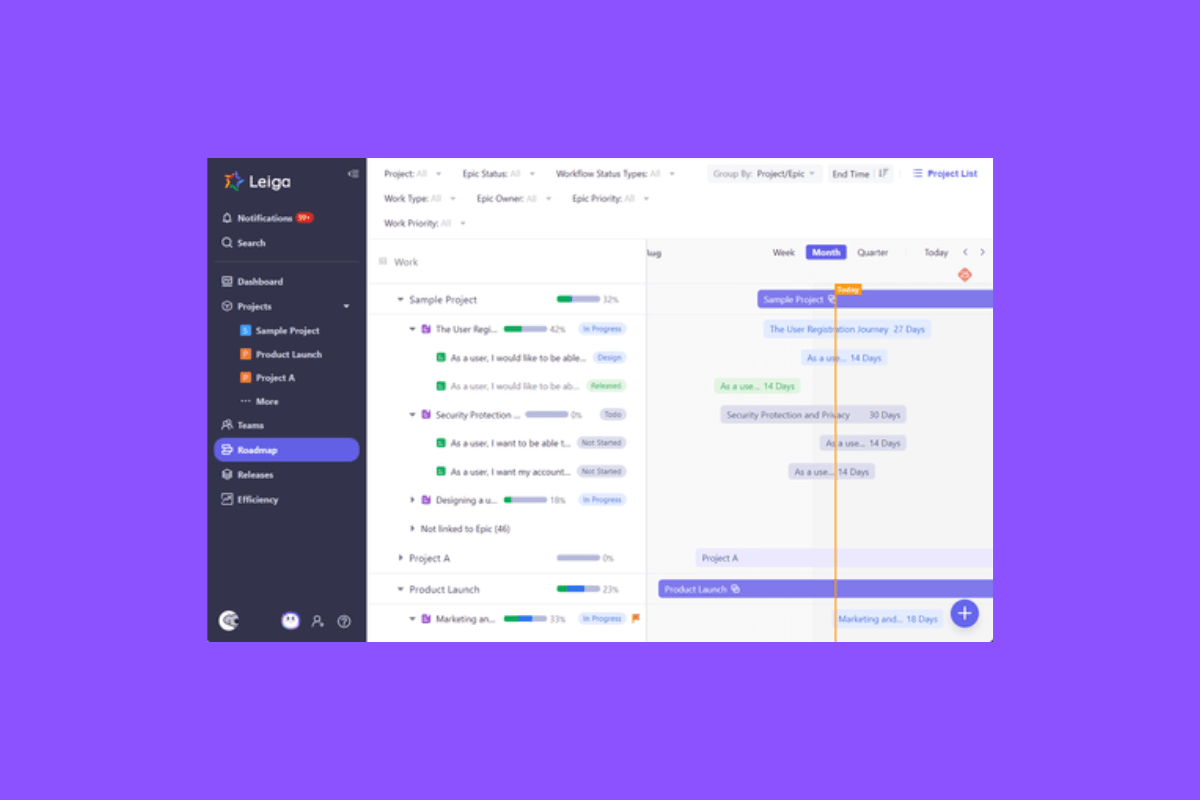
Linking OKRs, Roadmaps, and Execution
Leiga has built-in dashboards that help teams set OKRs, create roadmaps, and connect them to daily actions. The platform helps connect your high-level objects to roadmaps, which you can break further into project sprints and smaller tasks.
This turns objectives into actionable steps, also helping teams measure progress through dashboards. The visibility on projects, tasks, and ownerships helps ensure alignment for teams.
What makes Leiga perfect for aligned autonomy is that your team can still choose how to create these dashboards and sprints. You can even customize its features so it fits your workflow.
doVisibility and Transparency
As mentioned, Leiga has dashboards, task tracking, and project reports across levels. Dev leaders, product managers, and project managers can see members or teams that are drifting off the direction of objectives.
The visibility that Leiga offers also prevents duplicates and even conflicting work, especially those that have complex task dependencies. Moreover, dev leadership can compare the performance of teams against industry benchmarks.
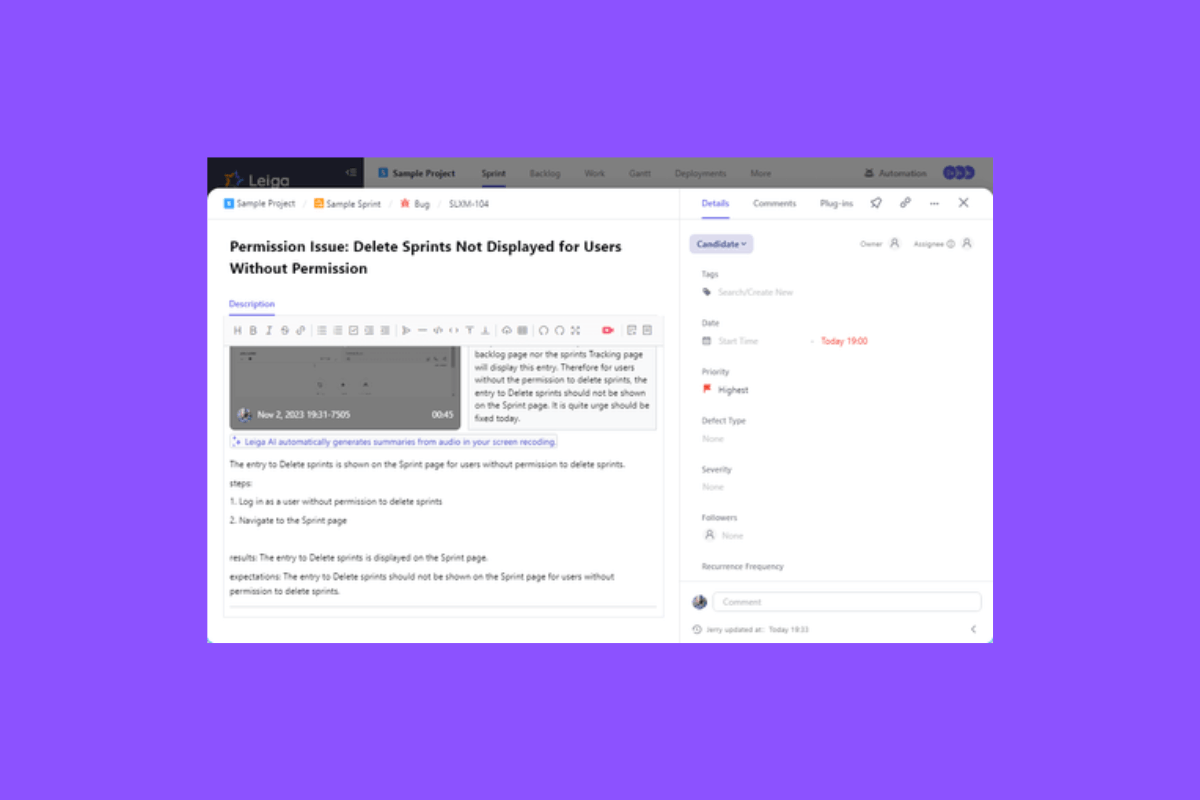
Strong Tool Integration
Context switching is a real problem for developers. It often causes developers to lose time, have a hard time focusing, and regaining their flow. With Leiga, you can integrate your favorite developer tools and communication apps.
This reduces context switching and helps you code without interruption. Leiga also has IDE integration, so you can update task progress without leaving your coding window. You get more time to focus on priorities without breaking your flow.
Read More: The Hidden Costs of Context Switching for Dev Teams
Better Alignment and Collaboration
Leiga is a centralized workspace for all tasks, documentation, and insight reports. It's a great tool that fosters better collaboration and stronger alignment amongst teams.
Developers can customize Leiga to fit their workflows and also use it to centralize all communication in one place. The integration of apps such as Slack and email also ensures that you don't have to switch tools to get relevant information. Additionally, you can collaborate on editing documents in real-time.
For teams, Leiga makes it easy to adjust work and reprioritize tasks as your objectives evolve. Everyone can also see how the tasks assigned to them contribute to the bigger picture.
Leiga is not a platform for commanding teams or taking control of them through micromanagement. It's a tool that makes alignments more visible while also helping teams follow frameworks so they can operate autonomously within standards.
Teams can stay autonomous while still achieving high alignment. With Leiga, you can perform better, ship faster, and ensure quality. Ready to experience autonomous alignment? Try Leiga for free today.
- Streamline Your Workflow with Leiga
- Effortlessly automate tasks
- Boost productivity with AI insights
- Free forever — elevate project management
